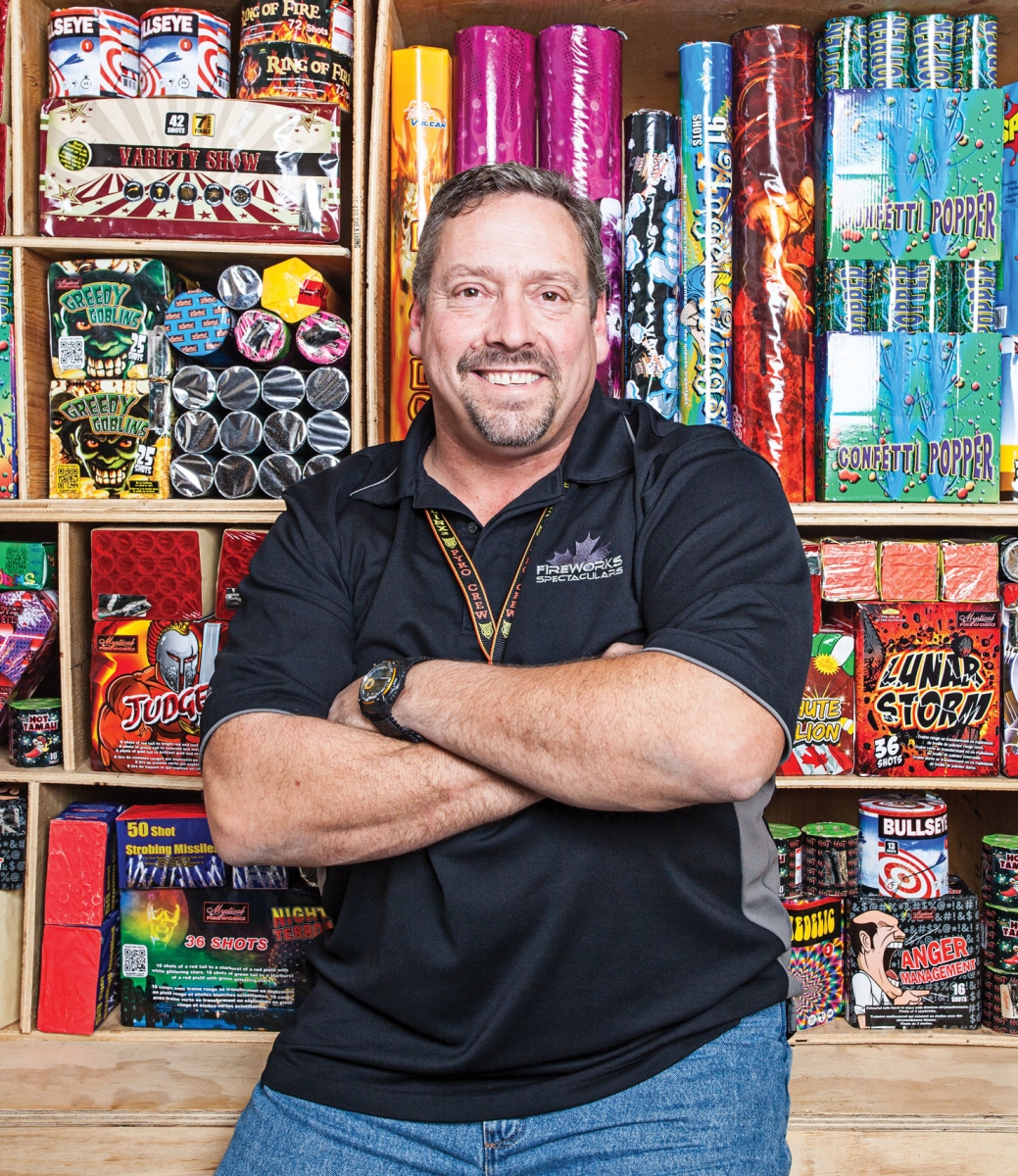
Photography by Ashley Champagne
Who: Rob Kowalyshyn
Age: 48
Job: Master Pyrotechnician, owner of Thunder F/X Fireworks
Experience: Visions of skyrockets in flight were hardly on Rob Kowalyshyn’s mind more than 20 years ago when a colleague suggested he take a safety course in fireworks. But from that moment, the Sturgeon County mechanic was hooked on pyrotechnics. After eventually getting his fireworks supervisor certificate from Natural Resources Canada, Kowalyshyn pursued his hobby until he discovered he was in constant demand. Since then, he’s designed, fired and assisted on such notable events as Vancouver’s Symphony of Fire, the La Fte du Lac des Nations Fireworks Competition in Quebec and the Western Pyrotechnic Association’s Winterblast in Arizona. Kowalyshyn’s company, Thunder F/X Fireworks, performs about 20 shows a year, most of them during the summer, including St. Albert’s Canada Day celebrations, while he spends the rest of the year plying away as a mechanic. However, you don’t have to wait until after the spring thaw to see Kowalyshyn at work; he’ll be lighting fuses to paint the night sky above St. Albert on New Year’s Eve.
-“Because it’s such an ancient art and we now added really high-tech electronics to this ancient art, the things that we’re able to do now are just out of this world. With the way we fire and time these shows to digital music and with wireless control, it’s really a high-tech world these days. Now we have software programs and digitized firing systems that take care of a lot of that for us. We input the information, of course, but then it’s automatically calculated and fired that way. So, computers have played a very large part in the firing of these shows. I use a wireless digital firing system.
-“We used to sync music to fireworks by guessing and, by gosh, we would estimate the lift time of some of these explosions. They lift from a mortar, fly into the air and then explode, so there’s a certain amount of delay that has to be calculated. Manually, we would fire a shell, for example two and a half seconds before it was supposed to go off in order for it to explode to the beat of the music.
-“When I first started, the shells were fired by hand, which meant that we lit the fuse and then walked away. We also used to reload mortars, so once a shell was fired out of the mortar, or gun, we would reload it and then do it again, so there were unfired shells in containers around on site and we were located very close to them. Nowadays, hand-firing is not common and not allowed on some of the larger shows. So most of the people who are serious about doing this can now be hundreds of metres away, and actually sit back and enjoy the show with huge amounts of safety, compared to how it was done before.
– “There’s a lot of black powder used in today’s fireworks. With it being an ancient art (the earliest documentation would definitely go back to seventh century China), a lot of the mixtures are kept a closely guarded secret. You could use titanium in the mix to make a bright white flash. Copper could produce some blues. There are all kinds of ways to achieve these patterns, but, for most of them, it’s like trying to get a chef to give away a recipe.
-“A lot of shots do exactly what their names suggest. We have chrysanthemums and peonies, like the flowers, also palm trees, spiders, crowns, weeping willows … there’s all kinds of them. There are also some way-out ones out there. Some of them can have names like Fast Shirley and Tequila Sunrise.
-“The people out there using the product you can find at gas stations and other places – please use them with extreme caution. It is dangerous and, if we’re not careful about how we treat these things, eventually, they’ll be banned from public use and they’ll take away from those weekends at the lake when mom and dad buy a few dollars worth of fireworks for the kids. Just play it safe and give this stuff the respect it truly deserves.”





